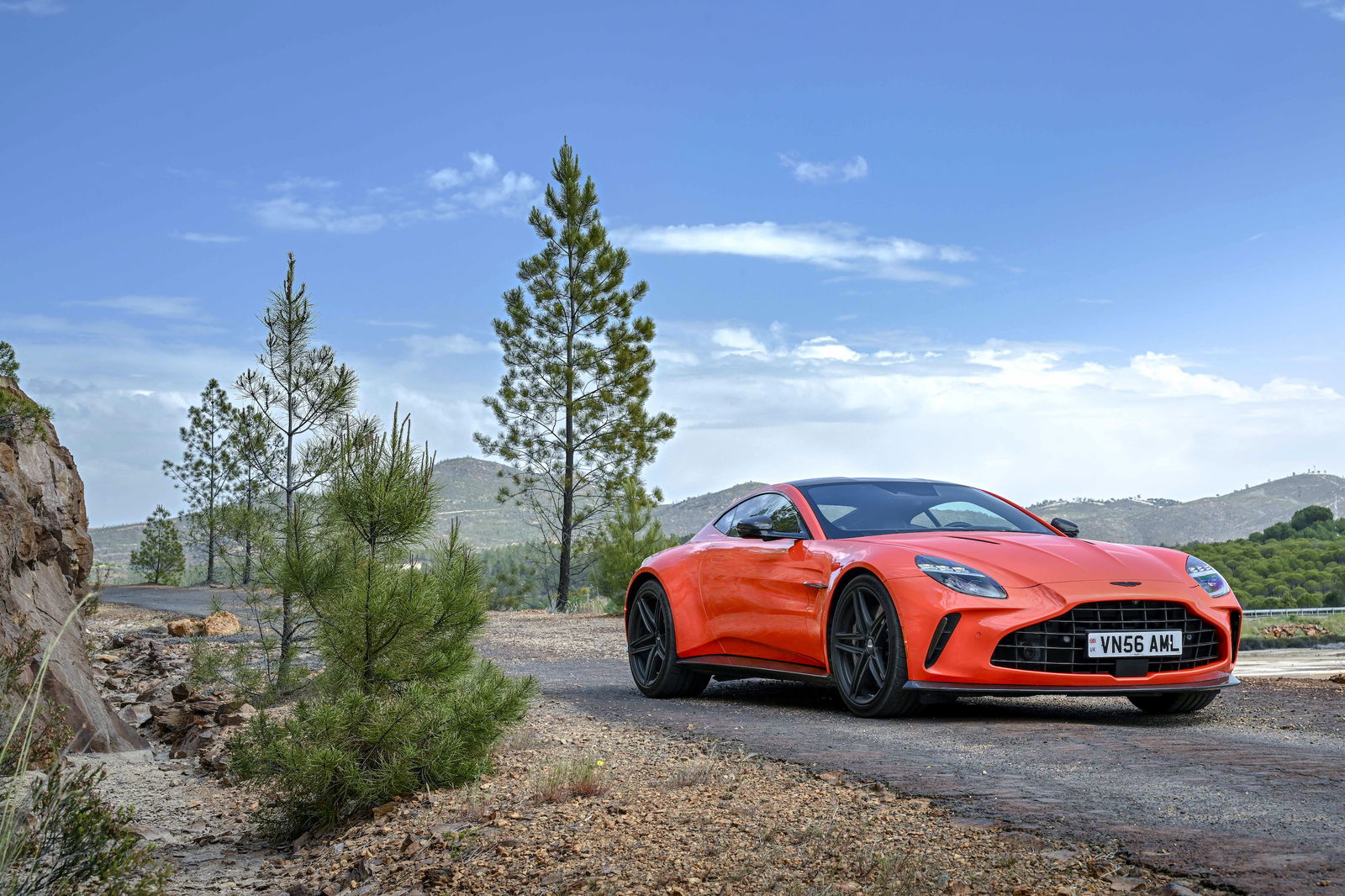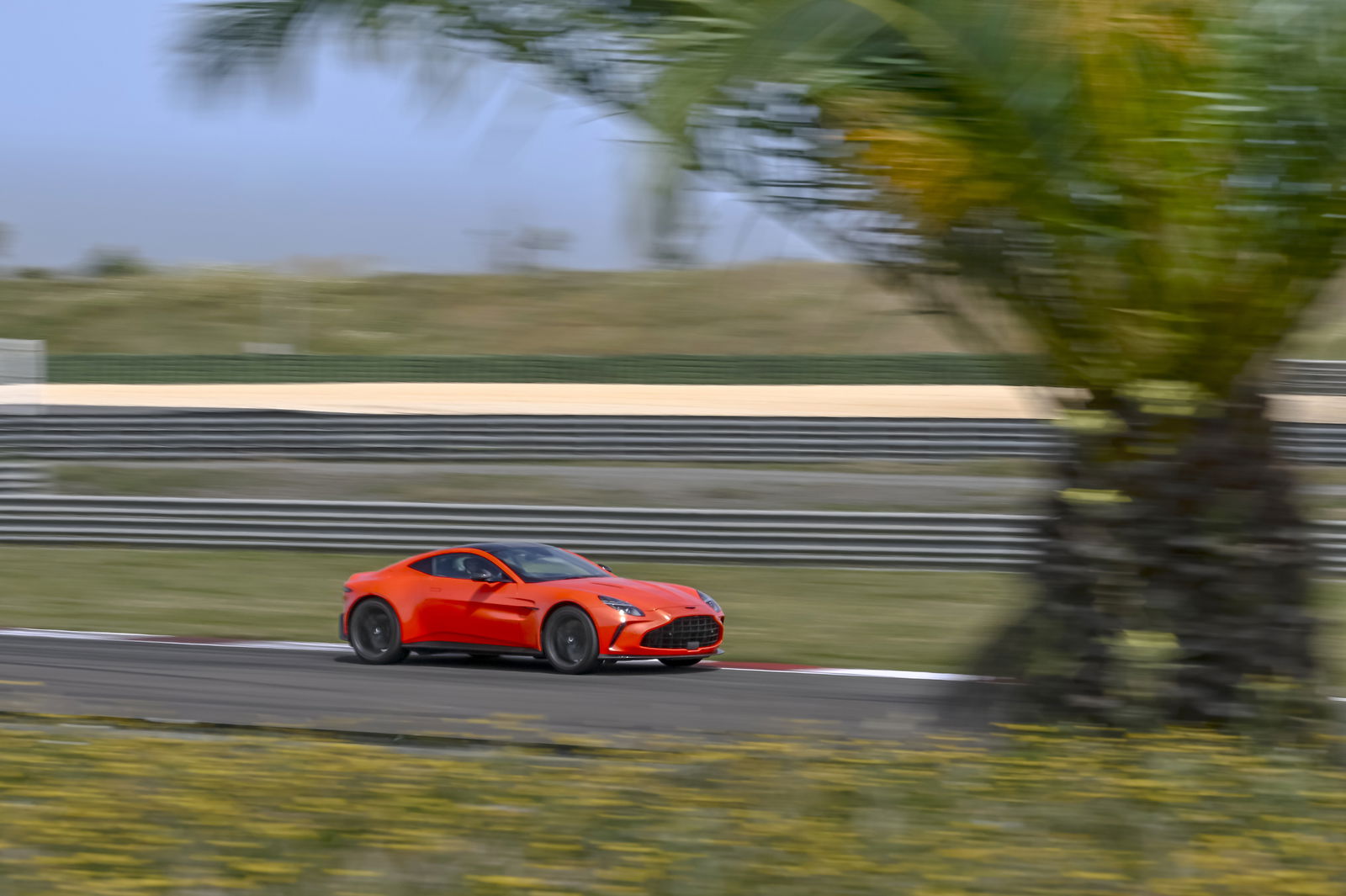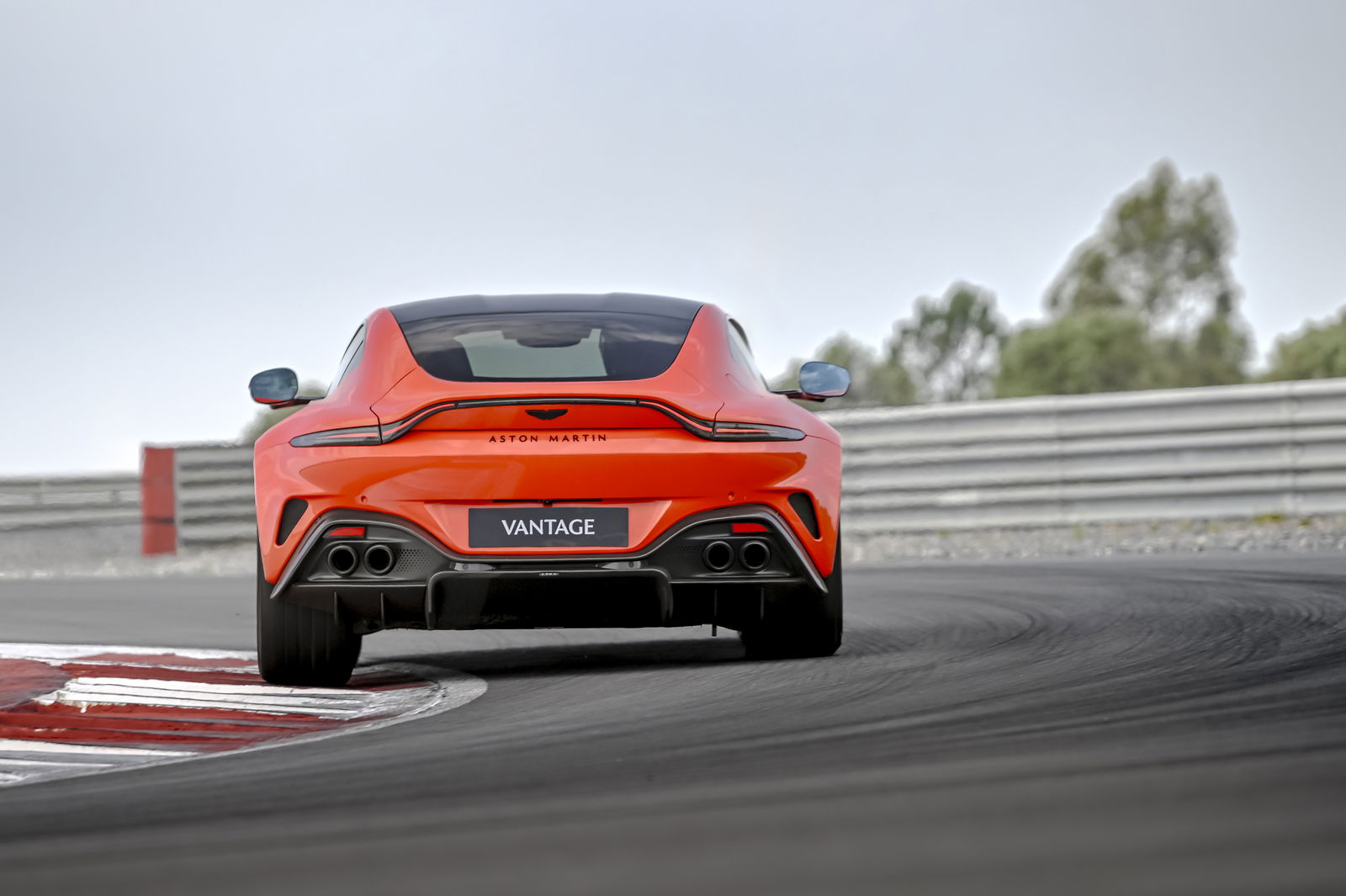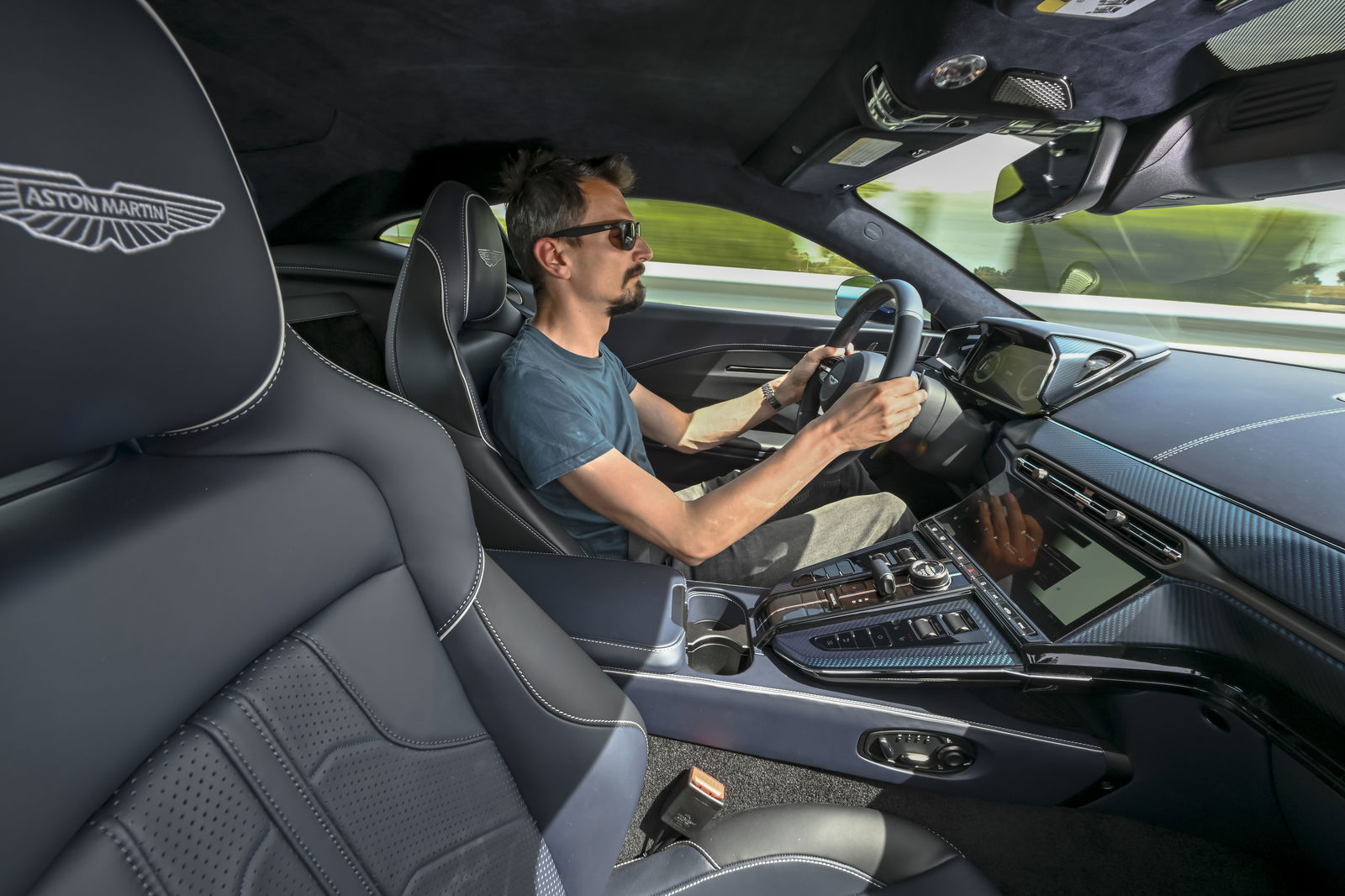2024 Aston Martin Vantage Review: The Best AM Ever?

Pros
- Noticeable uplift in handlingSounds better than beforeInterior a massive step forward
Cons
- Firm dampingComplicated ATC processInterior tech could use further improvements
656bhp? Really? That was my first thought when the updated Aston Martin Vantage was first revealed. An uplift of about 150bhp seemed pretty ridiculous. The outgoing car has its issues, but I never considered a lack of power to be one of them.
But, of course, the sort of people buying these cars pay a lot of attention to the figures, and 503bhp doesn’t really cut it for a car like this when you can buy something like a BMW M4 with a greater output. And Aston hasn’t merely upped the power and called it a day.
It’s clear just from looking at it that this isn’t a mere mid-life tickle - with around 80 per cent of the car being new, Aston is considering this Vantage a new-generation vehicle. The silhouette is similar, but the body is now 30mm wider, and sporting a whole new front end with a massive grille that feeds the reworked V8 with 29 per cent more air.

The V8, by the way, was reengineered by Aston Martin, not Mercedes-AMG. At AM’s request, each 4.0-litre twin-turbo V8 that makes its way over from Affalterbach has bigger turbochargers, reworked camshaft profiles and a tweaked compression ratio. Along with the 30 per cent increase in power, torque is up by 15 per cent to 590lb ft. The 0-62mph time duly drops by half a second to 3.4sec, and the top speed goes up by 7mph to a jolly exciting-sounding 205mph.
The updated body gives the Vantage a much more cohesive look than it had before, with that ‘bottom feeder’ look thankfully consigned to the bin. In the metal, it looks superb, but that body also hides some important changes to make the car drive better.
The structure has been altered to shove the front cross member further back, which makes the front double wishbone mounting points stiffer. At the other end, strut tower strengthening has increased rear axle stiffness by 29 per cent, and finally, the adaptive dampers are new.

And we’re not done yet. There’s a new six-axis inertial measurement unit, working with which is the Adjustable Traction Control (ATC). It’s yet another one of those multi-stage traction control dials that let you decide just how ‘off’ the TC is, and it’s this part of the car that can radically change its character.
With Sport+ mode turned on during track driving, it feels like a much more confidence-inspiring car than the old one. Changes in direction can be completed so quickly you’re almost caught off guard, while the rejigged electronic power steering feels natural, linear and well-weighted.
It is, of course, enormously quick, and as we’ve found with the DB12, Aston has managed to make this V8 sound nothing like an AMG. It’s a richer, creamier sound, and although it’s augmented slightly through the speakers, it’s done in a way that isn’t irksome. The eight-speed automatic gearbox dutifully and quickly shifts cogs, meanwhile, via a lovely set of steering wheel paddle shifters.

After one session getting up to speed on Monteblanco circuit in southern Spain, session two presents an opportunity to step things up a notch. This time, I try Race mode and press and hold a button to disengage the stability control, which brings up the ATC. The levels are decided via the same rotary controller that normally changes to the driving modes.
The higher the number, the less the traction control intervenes. I start in 3, and straight away, the Vantage feels wholly different. Looser. Livelier. More exciting. More engaging. It’s now I get a sense of how much the traction and stability control systems were subtly keeping things in check in the last session - there were only a few times I actually felt progress being impeded, but in reality, the electronic gubbins were working hard to keep the Vantage’s tail from waggling.
Partially unshackled, the Vantage feels super pointy, with a dialled-in front end going brilliantly with a rear end that loves to break free. Stepping things up to mode 5, the Vantage becomes more demanding, but still plenty manageable.

Such is the confidence I feel in this car, that I’m happy going up to mode 7 in the final session, eventually switching to mode 8 - fully off. More care now needs to be taken with the throttle pedal, and you do need to be paying attention when the rear does break traction - when it goes, it tends to happen quite quickly.
Attention also needs to be paid to the brakes - towards the end of each 20-minute session, the pedal was getting closer and closer to the floor as the stoppers started to fade, even though these cars all have the optional carbon ceramic brakes fitted.

Otherwise, though, it’s a masterpiece of a car to drive fast on a circuit. One that builds confidence and encourages you to lean on it, while also treating it with respect. It’s approachable to a point but isn’t interested in making your life too easy. And for the money, I’m not sure there’s anything comparable I’d rather take on track - a Porsche 911 Turbo S simply wouldn’t be as fun.
Out on the road, the boosted V8 doesn’t feel as excessive as I thought it might. It helps that it’s not one of those engines whose true character is only revealed at full gas - even at part throttle, it’s a joy to experience. With V8s dropping like flies, it’s great news that Aston Martin is committing to this engine for as long as AMG will make it. Aston is even planning a new V12. Who’d have predicted either a few years ago?
Even on smooth Spanish roads, the dampers need dialling black to give enough compliance to stop the car feeling like a nervous, bone-shaking wreck. Thankfully, that’s easy peasy, thanks to a dedicated button on the centre console to change between the three levels of damping. Judging by our experiences with the DB12, that’ll come in handy on crappily-surfaced UK b-roads.

On the subject of comfort, it’s worth pointing out those big 21-inch wheels and their bespoke Michelin Pilot Sport S5 tyres cause a fair racket, but generally, the Vantage is a pleasant car to cruise around in, helped by how much better the cabin is. It’s scarcely different from the DB12’s, but that’s just fine by us.
The new, Aston Martin-developed interior tech works well (no more Mercedes hand-me-downs here), but could do with a few tweaks. A lot of the text and graphics are weirdly small, but a fix for one item - the teeny, tiny gear indicator on the instrument cluster - is already in the works. Speaking to Director of Vehicle Performance Simon Newton, it was hinted that there might also be a solution for the slightly fiddly ATC process (if it’s enabled and you want to change driving modes, you currently can’t do so without turning ATC back off again).

All in this is a much more complete car than it was before, and probably the best-driving Aston ever, save for the ultra-special, limited-run stuff. It’s even decent value - the Vantage costs £165,000, which seems bang on the money when looking at alternatives like the aforementioned 911 Turbo S.
Like the DB12, it’s an Aston Martin that wins you over on merit, with the badge and the looks not having to do anything like the heavy lifting of previous AMs. Now, they’re just a really nice bonus.



Comments